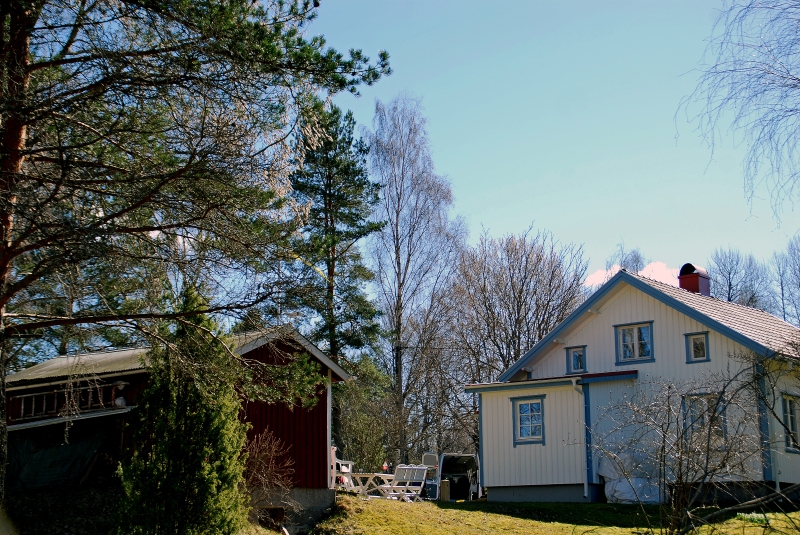








 Påsk, a celebration that has become huge in Sweden and mind, obviously not for its religious meaning, as Swedes are well down in the statics when it comes to church visits and religious beliefs. Easter is a secular feast in Scandinavia, and people follow traditions primarily because they’ve always done so, spirituality aside. Still, there abviously are some common elements which characterize this celebration, and for every Swede “Påsk” (the Swedish name for Easter) means…
Påsk, a celebration that has become huge in Sweden and mind, obviously not for its religious meaning, as Swedes are well down in the statics when it comes to church visits and religious beliefs. Easter is a secular feast in Scandinavia, and people follow traditions primarily because they’ve always done so, spirituality aside. Still, there abviously are some common elements which characterize this celebration, and for every Swede “Påsk” (the Swedish name for Easter) means…
- The holiday cottage. Nowadays, the large majority of the Swedish population lives in big urban centers, principally due to job and schooling opportunites. Nonetheless, they manage to keep a foot in the countryside, personified by the holiday cottage, a bucolic spot where Scandinavian people love to gather relatives from far and near. The Easter weekend thus represents the best opportunity to open up the summer house, which usually remains locked and empty for the entire winter. Once the floors have been swept , the stuffy rooms aired and the cottage warmed up, it is finally time to celebrate, enjoying the pale sun which is starting to melt the first snow after months of bitter cold.
- smörgåsbord. A typical Easter lunch (which actually does not vary considerably from the Christmas one) consists of potatoes gratin and meat, usually roast lamb. The table is set as a regular buffet, known in Swedish as “smörgåsbord”, which sees herrings along with smoked salmon, cheese, crisp bread and some other suitable foodstuffs.
- The colour yellow. Yes, Easter in Sweden is emphatically yellow, and as mentioned above this has nothing to do with the liturgical colours, which are commonly black, purple and white. Påsk is yellow in Scandinavia simply because a vast array of symbols related to it is, including feathers, eggs and chickens.
- Påskkärringar. Påskkärringar literally means “Easter witches”, a tradition that has its roots in the ancient folklore. According to the legend, witches would fly to Scandinavia the Thursday before Easter in order to dance and cavort with the Devil, letting lose all world’s bad spirits. In the past, Swedish people used to light fires to scare them away, a practice honored nowadays by the bonfires which take place during Easter time. Nevertheless, those archaic beliefs signed a terrible chapter of Swedish history, leading to witch hunt and the execution of thousands of women accused of witch craft. In modern Scandinavia, little girls remember them by dressing up in old clothes (often stolen from their permissive nanas), shawls and oversize skirts, along with painted rosy cheeks and freckles. A mini-halloween takes thus place; little girls go door to door carrying a basket and an old-fashioned kattle, swapping drawings for candies.
- Påskägget. In Sweden, the traditional Easter egg is made of plastic or paper, with decorations representing chickens on it. Filled with candies and chocolate, it is given to children on Easter day, keeping high the sugar levels for the following weeks.
- Påskris. The “Påskris” is a tiny twig with colorful feathers that is scattered everywhere in Sweden at this time of the year. Whether in the past this symbol was associated with the Christian practice of the flagellation (not so jolly, is it?), nowadays Scandinavian people are accustomed to buy a sprig at the local supermarket, decorating it by adding multicolored feathers. If you then want to be particularly eccentric, blown out eggs with meticulous paintings, hens, chickens and witches can be added to your twig as well.
With an average of more than 1,500 tons herring and 2,000 tons of eggs sold in Sweden at this time of the year, Easter day won’t surely go unnoticed.
Glad påsk allihopa!

Bra skrivet Virginia 😉
LikeLike